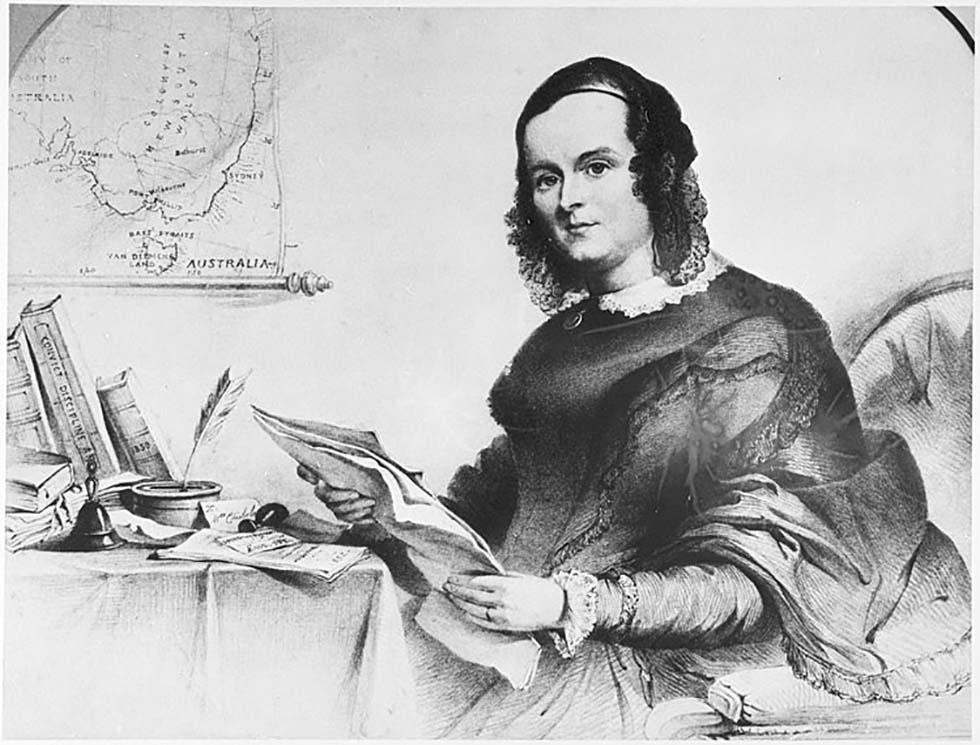


About this record
This is a black-and-white photograph of a drawing of the 19th-century humanitarian and social reformer Caroline Chisholm. She is shown sitting in front of a covered table reading some papers, with a quill pen and books to the right. On the wall is a partial drawing of what may be a sea chart or map. Chisholm has been drawn wearing a dark-coloured dress with a lace collar. Part of this drawing may have been used for the Australian five-dollar note in 1967 or the five-cent postage stamp in 1968.
Educational value
- Caroline Chisholm (1808–77) was a prominent humanitarian in the early years of colonisation. After arriving in New South Wales in 1838, she realised that little help was given to new migrants. Although she did not have any official standing, she began meeting newly arrived ships to help young women find respectable employment. In 1841 she convinced Governor Gipps to help her philanthropic work by providing a building that housed nearly 100 female immigrants.
- During the 1840s Chisholm, 'the emigrants' friend', helped over 11,000 migrants, not only in Australia but on board the migrant ships. Her work was often without official support and she worked tirelessly to raise public support. She was often successful in attracting influential people to her cause, especially when she returned to the United Kingdom in the late 1840s and gave evidence to a committee of the House of Lords – a considerable achievement for a woman at that time.
- Chisholm believed in land reform, agitating for land to be more widely available for families. This brought her into conflict with wealthy landholders, sometimes called the 'squattocracy', who were concerned that too many small farms would break up their large holdings where they grazed sheep and cattle. Her commitment to the importance of families migrating to Australia led her to set up the Family Colonisation Loan Society (1849).
- Although Chisholm was successful in proving to the government that more could be done to help people, changing immigration patterns brought about by the 1850s Victorian gold rush meant her interests in family-oriented immigration were superseded. This, coupled with antagonism towards her Roman Catholic background at a time when the Church of England dominated Australian society, saw her prominence lapse during the 1850s and 1860s.
- In 1967 Chisholm's work in pioneering migrant rights was celebrated on the new five-dollar note, and she was the first woman other than Queen Elizabeth II to be honoured in this way. Also on the note were images of women, children and ships, signifying her devotion to these causes. Her portrait was probably based on a lithograph by Thomas Fairland in 1852, from a painting by Angelo Collen Hayter that was displayed at the prestigious Royal Academy from 1850 to 1852.
Acknowledgments
Learning resource text © Education Services Australia Limited and the National Archives of Australia 2010.
Related themes
Need help with your research?
Learn how to interpret primary sources, use our collection and more.




